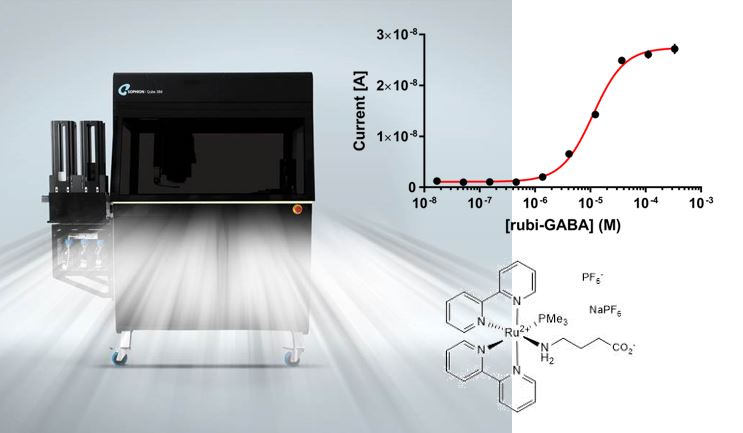
オプトジェネティクスに興味をお持ちですか?
Optogenetics uses light to activate (depolarize) or inhibit (hyperpolarize) cells genetically engineered to express light-gated ion channels. In this way, control of a cell’s membrane potential can be controlled by light, allowing fast & precise control only in the cells expressing the light-gated ion channels. Channelrhodopsins (e.g. ChR2) are cation channels that when gated by light will depolarize the cell membrane; halorhodopsin (e.g. NpHR) is a chloride ion pump that can be used to hyperpolarize the cell membrane.

By combining these optogenetic actuators with cell-type specific gene promotors & using viral delivery (e.g. adenovirus), very specific neurons within a neural circuit can be targeted in vivo to define roles & mechanisms in behaviours in live, active animals.
Unsurprisingly this very powerful technique has many applications & would not be hyperbole to say it’s revolutionized neuroscience. Indeed, Nature made it their method of the year for 2010. Barring the Nobel Prize, which is sure to follow, all the main scientific prizes & plaudits have been awarded to Georg Nagel, Peter Hegemann, Ernst Bamberg & Karl Deisseroth, the scientists who invented & developed this technique.
The ability to control membrane voltage by both voltage-clamp & optogenetics on an automated patch clamp platform with the flexibility & potential this may afford researchers was not lost on Sophion. By 2018 we had developed a functional Qube with LED arrays to perform simultaneous voltage-clamp & optogenetic light control of membrane voltage. Using ‘Qube Opto’ we have now produced a book chapter, application reports & presentations.
For more info on how Qube Opto might be used in your research see the links below or contact us at info@sophion.com.
- Optogenetics and Optical Tools in Automated Patch Clamping (Book chapter), Boddum, K., Skafte-Pedersen, P., Rolland, J. F., & Wilson, S 2021. Sophion Bioscience, Axxam S.p.A.
- Qube Opto 384 – Optical modulation of ion channels (Application Report). Kim Boddum 2019, Sophion Bioscience.
- Optical modulation of ion channels using Qube Opto (Poster). Kim Boddum, Peder Skafte-Pedersen, Jens Henneke, Daniel Sauter, Jean Francois Rolland, Jiaye Zhang, Sandra Wilson 2019. Sophion Bioscience, Cranfield University, Axxam S.p.A.
- Ligand-activation of GABAA receptors on the automated patch clamp platforms QPatch and Qube 384 using conventional electrophysiology and optopharmacology (Poster). Melanie Schupp, Kim Boddum, Daniel R. Sauter, Peder Skafte-Pedersen, Linda Blomster, Hervør L. Olsen, Rasmus. B. Jacobsen 2018. Sophion Bioscience, Saniona.
- Super-short ligand exposure time on Qube Opto 384. News piece 2018
- Light activated rubi-GABA on Qube Opto 384. News piece 2018
- Qube Opto 384 – for optical stimulation of ion channels or compounds. News piece 2018

If you are interested in developing new assays, set up collaborations on optogenetics/optopharmacology or have ideas for future work lets talk.
